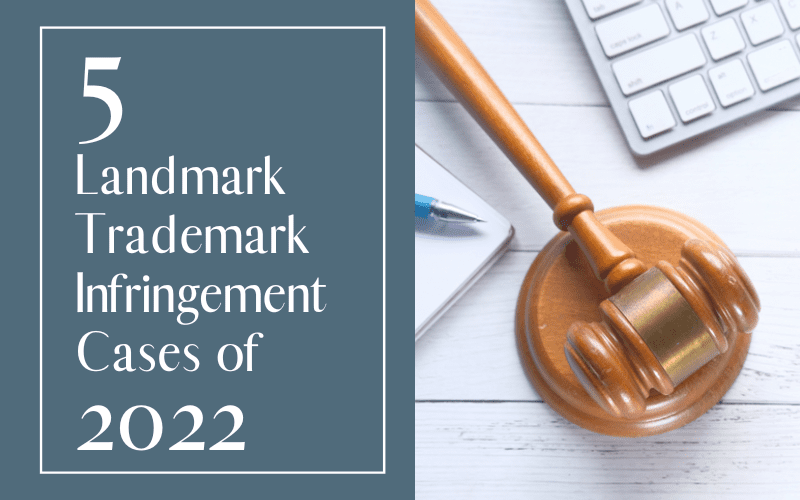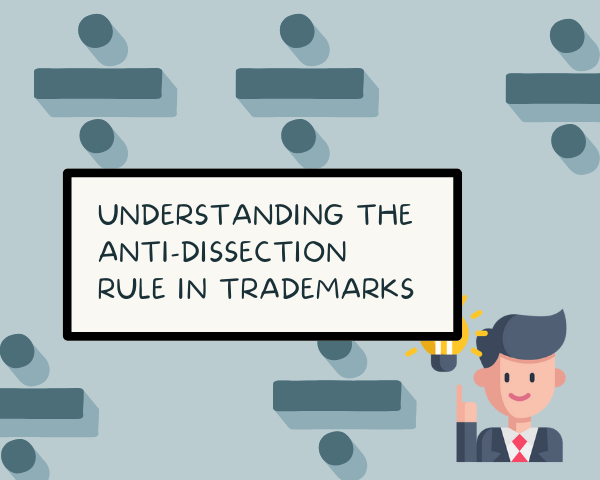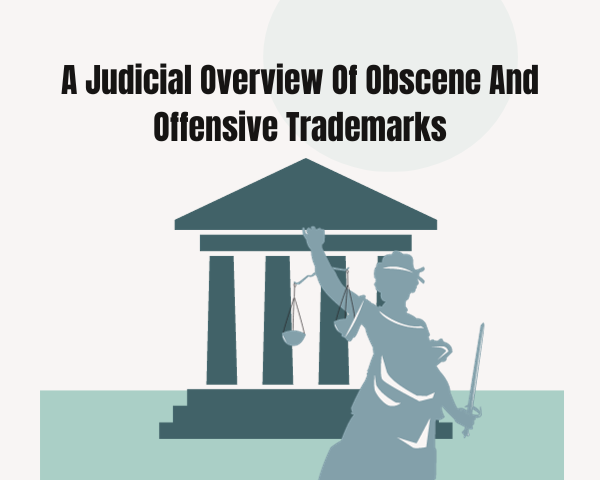The year 2022 has been an extremely important year for the development of trademark jurisprudence in India. There have been various landmark judgements which have not only highlighted cardinal principles of trademark law but have also given a nuanced understanding of how Courts interpret statutory trademark provisions. Mentioned below are some crucial judgements passed in the year 2022 on matters dealing with trademark infringement.
Renaissance Hotel Holdings Inc. V. B. Vijaya Sai And Others (19th January 2022)
This case was an appeal by the Plaintiffs, who were owners and proprietors of the trademark “Renaissance”, against the judgement passed by the Karnataka High Court. The Appellant had initially filed a suit restraining the Respondent from using the trademark “Sai Renaissance” along with any other trademark similar or identical to the Appellant’s trademark. Considering that the Appellant and the Respondent were operating in the hospitality industry, this case had a nuanced approach towards understanding the legislative intent behind Section 29 of the Trade Marks Act, 1999 (“the Act”). The Appellant had been using the mark since 1981 and had gained popularity due to resources employed in advertisements and promotional activities. Having found that the Respondent was operating hotels under the name “Sai Renaissance” in Bangalore, they alleged that this was an infringement of their trademark and sought damages.
The Respondent contended that “Renaissance” was not a coined or inventive word but rather generic and was used honestly and concurrently by the Respondent since 15 years. The Trial Court restrained the Respondent from using the mark, but on the other hand, no damages were awarded. On appeal to the High Court, it was held that there was no proof that any unfair advantage was taken or harm caused to the Appellant’s reputation. The Supreme Court, thus, delved deep into the legislative intent behind Sections 29, 30, and 31 of the Act. Regarding the test under Section 29 of the Act, they opined that the Appellant need not prove actual damage if the trademarks are identical or similar, and so is the class of goods and services catered to by both parties. The High Court had erroneously held that even though infringement had been established, actual deception and damage were not proved.
Section 29(4) and Section 30(1) of the Act were read contextually and in its entirety rather than focusing on a specific part of the provision, contrary to the stance taken by the High Court. The Supreme Court was clear in its interpretation that in such cases, the Court would operate on the presumption that it is likely to cause confusion on the part of the public. Thus, in infringement actions, once it is found that the Respondent’s trade mark is identical to the Appellant’s registered trade mark in the same or similar class of goods and services, the Court cannot go into an enquiry of whether the infringement was likely to deceive or cause confusion.
Pernod Ricard India Private Limited V. Frost Falcon Distilleries Limited (2nd March 2022)
This case discussed the importance of the anti-dissection test in considering the trademark as a whole. However, it was distinct due to its emphasis on the dominant part test. The Plaintiff alleged that the Defendant’s mark “Casinos Pride”, the label, the design of the bottle in which the Defendant sold its product and the package in which the bottle was packed, all infringed the Plaintiff‘s registered trademarks “Blender’s Pride” and “Imperial Blue”.
The Plaintiff also sought relief under passing-off. On this question, the Court highlighted the three determinative questions to decide on questions of passing-off, i.e., whether the Plaintiff‘s product had come into existence prior to commencement of user by the defendant, whether the Plaintiff had acquired goodwill in the property by the use of the mark in question and whether the disputed mark or getup had become distinctive of the plaintiff‘s goods or services.
Both the parties belonged to the segment of Indian Made Foreign Liquor, catering to the same customers. The Plaintiff contended that they acquired a secondary meaning and became source identifiers due to continuous and extensive use of the mark. Further, by previous judgements, “Blenders Pride” and “Imperial Blue” are recognised as well-known marks. The Defendant averred that the mark was generic, descriptive, and laudatory. Thus, the Plaintiff could not claim exclusivity unless the word acquired a secondary meaning in the minds of the consuming public. Further, there was no phonetic, visual or other similarity.
The important consideration, in this case, was that of deceptive similarity. To establish deceptive similarity, the test is whether the entirety of the proposed trademark would cause deception or confusion in the minds of persons accustomed to the existing trademark. However, there is an exception to the anti-dissection rule. In cases where a part of the composite mark is a dominant part of the mark, the anti-dissection rule heeds the dominant part test. Here, the term “Pride” was a successor to the word “Blenders”. “Pride” per se was laudatory and generic, thus not capable of being treated as distinctive.
The right of the Plaintiff as under Section 17 of the Act pertaining to the mark “Blenders Pride” as a whole. The Plaintiff had no exclusivity over the term “Pride”. Discerning the dominant part of this mark would require the plain glance test. Using the plain glance test, the Court opined that there was no exclusivity regarding the word “Pride” as a part of “Blenders Pride”. Thus, there was no infringement. It was also held that prima facie, there was no deceptive similarity vis-à-vis the mark “Imperial Blue” as well.
RPG Enterprises Limited V. Riju Ghoshal Trading As RPG (21st March 2022)
This case reemphasises and highlights the various important principles of Indian trademark law. The Plaintiff’s mark was an acronym derived from the initials of its founders. Due to their popularity in various sectors and the use of the mark, the term “RPG” became a source identifier and acquired a secondary meaning. The Defendant’s use of the trademark containing ‘RPG’ as its only leading, essential and prominent feature in respect of their services thus gave rise to the question of infringement. The Defendant alleged that their mark was a logo mark, being inherently distinctive due to differences in style, the combination of words, colors etc.
Since abbreviations of a name can also constitute a trade mark, for example, KSB Properties, H&M Hennes & Mauritz AB etc., the Court proceeded to determine infringement. Certain factors, such as the extent of knowledge of the RPG mark, its recognition by the relevant public, the duration of the use of the RPG marks, the extent of the products in relation to which the RPG mark is being used, the extent and duration of advertising and promotion of the RPG mark etc., were important determinants to hold that the mark was well-known and had acquired secondary meaning.
Ascertaining the question of deceptive similarity, the Court summarized the principles by stating that the matter rests on first impression itself, at the stage of interim as well as final relief. Trademarks are remembered by general impressions or by some significant detail than by any photographic recollection of the whole. The question is whether the distinguishing or essential feature of the Defendant’s trademark contains the same distinctive or essential feature or conveys the same idea as that of the Plaintiff’s mark. On the point of deceptive similarity, the approach is from the point of view of a man of average intelligence and imperfect recollection. Therefore it is important that instead of microscopic examination, both the visual and the phonetic tests are taken into account. Marks must be compared as a whole on the question of whether the Defendant’s mark is likely to cause deception or confusion in the minds of persons accustomed to the existing trade mark. Lastly, the nature of the commodity, the class of purchasers, the mode of purchase and other surrounding circumstances must also be considered.
Further, as for determining infringement, the following test was enumerated as per Section 29(4):
i) The person using the impugned mark is neither a registered proprietor in relation to the goods and services for which the mark is registered nor is using it by way of permitted use
ii) The impugned mark must be used in the course of trade and has to be either similar to or identical with the registered mark
iii) The impugned mark is used for goods or services different from those for which registration has been granted, and does the registered trade mark have a reputation in India
iv) The use of the impugned mark is without due cause and takes unfair advantage of the distinctive character of the registered trade mark.
The Court opined that the intention of the legislature was to afford stronger protection to marks having a wide reputation and goodwill, where the condition to provide a likelihood of confusion would be removed. Thus, marks were held to be deceptively similar, and the Defendant had infringed the mark of the Plaintiff.
ITC Ltd. v. Central Park Estates Private Ltd., (14th November 2022)
This case was a landmark in ascertaining the importance of well-known marks as per Indian law, with a parallel discussion on the principle of territoriality and famous marks doctrine under US law. The Plaintiff’s registered trademark, “Bukhara” was used in respect of a famous restaurant which had acquired goodwill and had been in the hospitality business since 1975. Consequently, the Defendants adopted the mark “Balkh Bukhara” for their restaurants. The Plaintiff’s primary contention was that “Bukhara” was a well know mark under Section 2(zg) of the Act, and hence, should be awarded protection under Section 11(2) of the Act.
Indian jurisprudence is at an advanced stage with regard to well-known marks and has also recognized the transboundary reputation of foreign marks. Previously, marks have been awarded protection under common law principles even before the incorporation of the statutory provisions as per international best practices. Due to this, the Court opined that considering the overwhelming evidence provided by the Plaintiff, the trademark “Bukhara” was beyond well-established.
The Court also looked at the decision of the US Court of Appeals, in a suit filed by ITC for infringement of their trademark. The US Court, as per the principle of territoriality in American trademark law, had held that ownership of a mark in one country would not confer exclusive rights to the said mark in another country. More so, the famous marks doctrine was uncertain considering only one decision had recognised it. Therefore, ITC was unsuccessful in protecting the mark in the US.
Contrary to this, in India, that the Plaintiff’s trademark enjoyed substantial goodwill and reputation among Indians as well as foreigners who travelled to India and carried back the said reputation. India also recognizes transborder reputation and the `well- known mark’ doctrines, both in its judicial decisions and in statutes. Thus, the US Courts judgements were not applicable in this case, and the mark was determined to be a well-known mark.
Sun Pharmaceuticals Industries V. Dwd Pharmaceuticals Ltd., (22nd November 2022)
This case emphasises the clean hands doctrine vis-à-vis trademark law. The Plaintiff’s claimed that they adopted and coined the trademark “Forzest” in 2003. Subsequently, the Defendant had filed an application for the mark “Folzest”, and both the parties were operating in the same class of goods and services. The Plaintiffs emphasised that since the suit pertained to pharmaceutical goods, the threshold of confusion was low. This resulted in the deceptive similarity test becoming stringent and public interest becoming paramount.
In response to the Plaintiff’s contention that their trademark had been infringed, the Defendant asserted that certain material facts were concealed by the Plaintiff from the Court. The Defendant was a leading manufacturer in the industry, a registered proprietor of the mark “Zest” and had a family of trademarks registered with “Zest” forming a part of them.
The Court held that the Plaintiff must come with clean hands while approaching the Court, putting forth all facts without any concealment. However, it is interesting to note that even though the Court deemed that there was no candid disclosure by the Plaintiff, the case was not dismissed at the threshold. This was primarily due to the fact that it pertained to pharmaceutical goods.
Pharmaceutical goods require the larger public interest to be taken into account and not just the rights of the private litigants. In such cases, even a remote possibility that there would be a likelihood of deception can led to disastrous consequences. Therefor despite not approaching the Court with clean hands, the Plaintiff was entitled to an ad-interim relief on the basis that they were the prior users and the two marks were deceptively similar.




